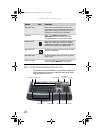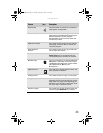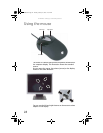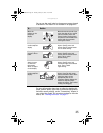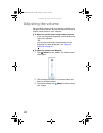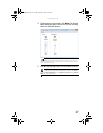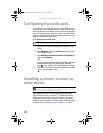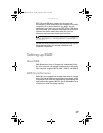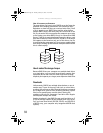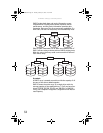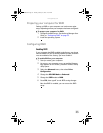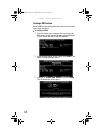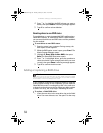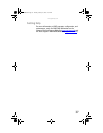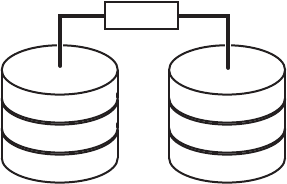
CHAPTER 3: Setting Up and Getting Started
30
How it increases performance
The more drives you have in your RAID 0 array, the faster the
potential drive reading performance. All hard drives have
limitations on how fast they can read and write files. If half
a file is stored on one RAID 0 drive and the other half on
another RAID 0 drive, each drive only has to read half of the
file. So, the entire file is accessed by the computer up to twice
as fast (using a two-drive RAID 0 array). In a three-drive RAID
0 array, if the file is evenly distributed among the drives, each
drive must read only a third of the file, and so on. If the entire
file happens to be stored on only one of the drives, the file
is accessed at the same speed as if it were on a standard hard
drive setup. Dividing up files between multiple hard drives like
this is called striping.
How it makes file storage cheaper
Because RAID 0 lets your computer see multiple hard drives
as a single drive, you can install several lower capacity (less
expensive) drives and have the same single-drive storage
simplicity and capacity as a larger, more expensive hard drive.
Drawbacks
Unfortunately, RAID 0 lets multiple drives behave as one in
another way. If part of the array fails (such as a hard drive
crashing), the entire array fails. Because the drives are treated
like a single drive, parts of files (including operating system
files) can be spread across several drives, leaving the
computer with only file fragments if one drive fails. Regular
and frequent backups are critical.
Another drawback is that RAID 0 treats each hard drive as if
it has the storage capacity of the smallest drive in the array.
So if you have three drives (300 GB, 250 GB, and 200 GB) in
a RAID 0 array, your computer only recognizes 600 GB total
capacity.
A
C
E
B
D
F
RAID 0
8512066.book Page 30 Tuesday, January 16, 2007 11:02 AM



